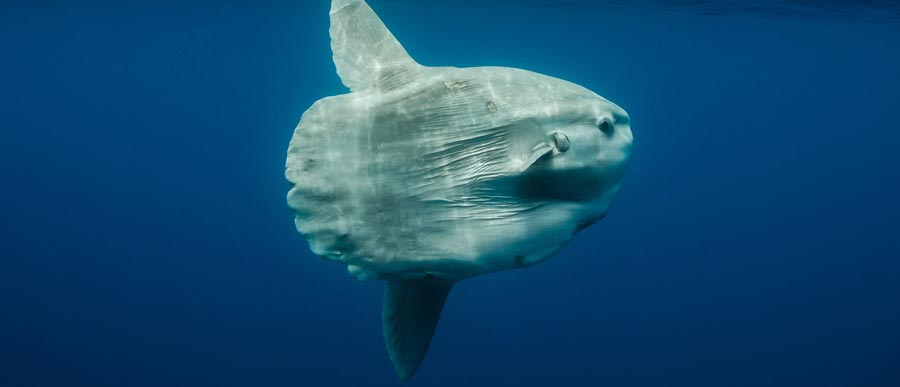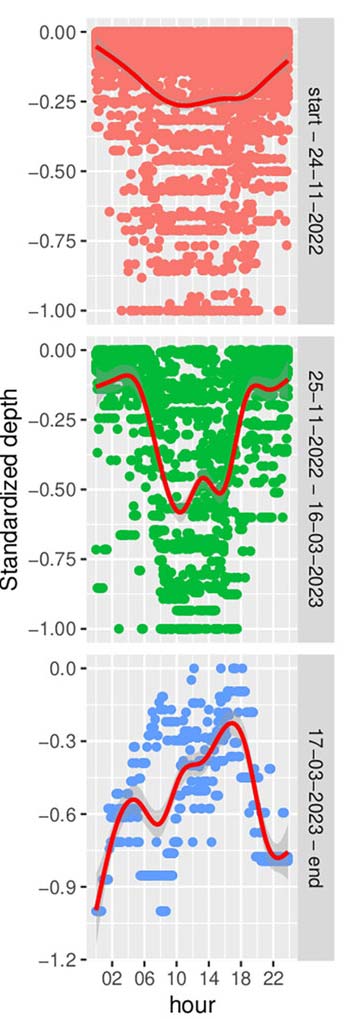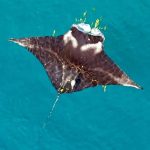← Back
Tracking a Sunfish in the Mediterranean Sea

Sunfish is a strange creature roaming the temperate and tropical oceans throughout the world, including in the Mediterranean Sea. Tracking it using pop-up archival tags can help in better understand its movements, all the more if the tagging is made so as to avoid premature releases.
The ocean sunfish (Mola mola L.) is one of the heaviest bony fish, weighting often more than a ton, with a unique body shape. It is found all around the temperate and tropical oceans, performing large-scale movements (see e.g. Sunfish, a giant mysterious animal in our oceans for another tracking of sunfish in the Pacific Ocean, using a different approach for tag fitting). However, the species’ population structure, status, and many aspects of its biology remain poorly known.
It is found in particular throughout the Mediterranean, where it is often a bycatch of some fisheries (while its commercialization is forbidden in the EU). In the meantime, no tracking seems to have been led in this sea specifically (some individuals tagged in the Atlantic Ocean went into the Mediterranean Sea, though).
To study sunfish in the Mediterranean Sea, Ifremer (France) choose to use a pop-up satellite archival tagging technique successful on bluefin tunas, since it often leads to long-term retention times. A second anchor was used to secure the tag alongside the body of the fish in order to reduce the movement of the tag, which can be a cause of premature release.
More info about animal tracking with Argos
One 75-cm sunfish was caught and tagged in the Gulf of Lions. The tag was programmed to release after 365 days. During this time, it moved in the westernmost part of the North Western Mediterranean, around Balearic islands, the Gulf of Lions and the Alboran Sea, ending up close to Gibraltar Strait when the tag was released. Its movements hinted at a movement towards the Atlantic Ocean.
![trajectory estimated for a speed prior of 4 km/h. The triangle and diamond identify deployment and pop-off (April 11, 2023) locations, respectively, whereas black points and labels identify the beginning of the different months. The colors on the trajectory identify the three different time periods. (from [Rouyer et al., 2024])](https://www.argos-system.org/wp-content/uploads/2024/06/deployment-and-pop-off-of-sunfishes-in-the-mediterranean-sea.jpg)


The tag released after 362 days, slightly before the programmed time. Assuming its speed at 4 km/h, the fish traveled 3956 km in this period. It covered a 8.32 km distance per day on average, ranging between 1.7 and 29.3 km. The tagged individual did substantial dives throughout the year, mostly during daytime, with the deepest dives around mid-day, depending on the period or area. The recorded deeper dives were the deepest for any molid species ever reported. The very deep dive recorded at the end of the tracking might be erroneous depth measurement, except that temperatures are coherent with the ones expected at that depth in the Alboran Sea. It must be noticed that light geolocation is more uncertain when the tag stay long at depths where no light can be collected.
The movement of the fish throughout the year did not indicate any yearly nor seasonal pattern. It did not show a clear residency within any given area of the Mediterranean, either. This has already been observed in the Pacific and northern Atlantic for sunfish, while it would be highly unusual for any other large pelagic species.
More tagging effort is needed to better assess the lifecycle and spatio-temporal movement variability of this species.
Reference & links
- Rouyer, T., Landreau, A., Derridj, O., Bonhommeau, S., Frejafond, R., Wendling, B., & Kerzerho, V. (2024). First long-term trajectory of an ocean sunfish (Mola mola L.) from the northwestern Mediterranean. Journal of Fish Biology, 1–5. https://doi.org/10.1111/jfb.15831



